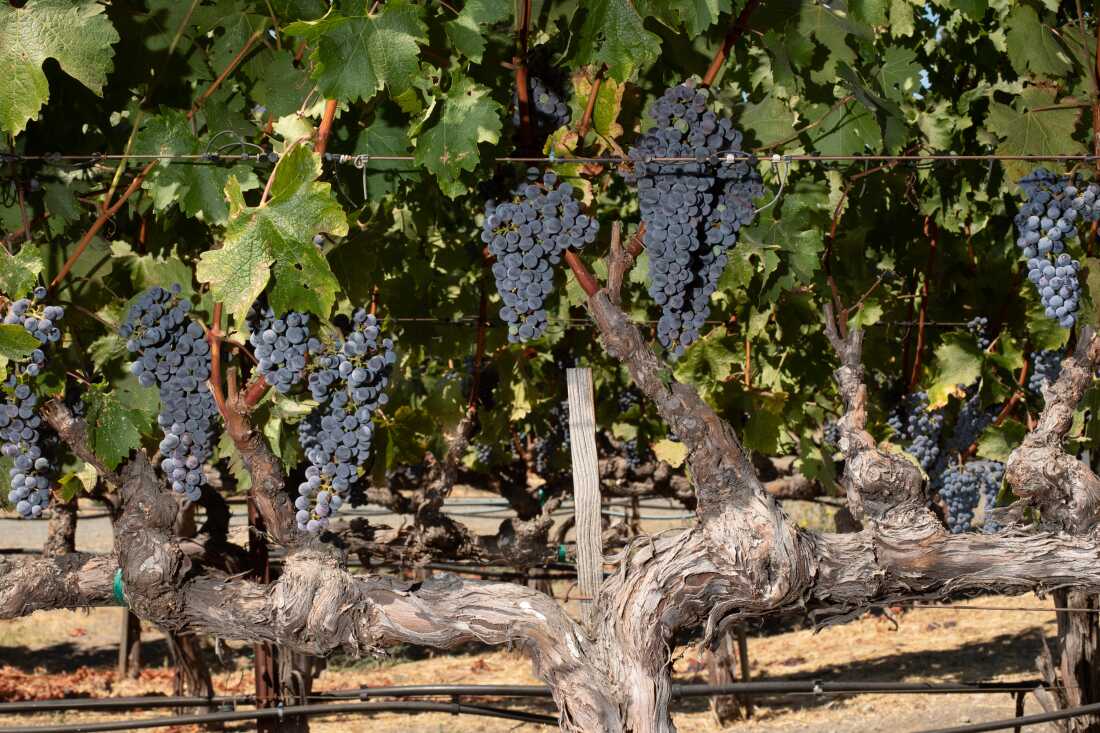
Late-summer heat waves are threatening Napa Valley's famed cabernet grapes, which produce some of the United States' most expensive wines. To survive in a hotter climate, winemakers are realizing they'll need to adapt. Ryan Kellman/NPR hide caption
toggle caption Ryan Kellman/NPRClimate change is affecting our food, and our food is affecting the climate. NPR is dedicating a week to stories and conversations about the search for solutions.
In California's Napa Valley, cabernet sauvignon is king.
The bold red wine has made the region world famous, with some bottles retailing at hundreds of dollars. But increasingly severe heat waves are taking a toll on the grape variety, especially in late summer during ripening. As temperatures keep rising, the wine industry is slowly confronting a future where Napa may not be the prime cabernet region it once was.
Sponsor Message
In the face of climate change, wineries around the world are innovating. New technology is being installed to keep the grapes cool during heat spells. A handful of wineries are going a step further. They're experimenting with new grapes, ripping out high-value cabernet vines to plant varieties from hotter climates.
The goal is to find heat-tolerant grapes that blend well with cabernet, potentially making up for the flavors that cabernet could lack when temperatures get even hotter. While many bottles labeled cabernet are already blended with other grapes in small amounts, winemakers may need more flexibility in the future.

NPR's Climate Solutions Week California farmers turn to agave amid drought conditions and climate change
"We know we have to adapt," says Avery Heelan, a winemaker at Larkmead Vineyards in Calistoga, Calif. "We can't just pretend that it's going to go away, because all we see is each year it's getting more and more extreme."
Still, blending with other grapes comes with risks. For a U.S. wine to be labeled cabernet, a bottle must contain 75% cabernet grapes or more. Any less, and it's considered a red blend. Blends typically don't command the same prices on store shelves as cabernet, especially since consumers are accustomed to picking U.S. wines by the name of the grape. Moving away from cabernet would be a major financial gamble for Napa's multibillion-dollar wine industry.
Sponsor Message
"It is a big shift," says Elisabeth Forrestel, an assistant professor of viticulture and enology at the University of California, Davis. "Without the market changing or demands changing, you can't convince someone to grow something that doesn't sell or doesn't garner the same price."









